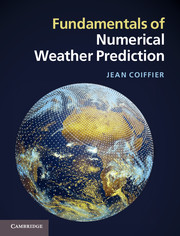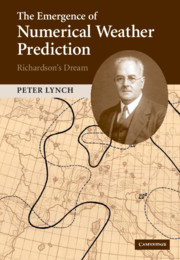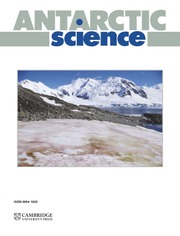Weather
A Concise Introduction
2nd Edition
$69.99 (X)
- Authors:
- Gregory J. Hakim, University of Washington
- Jérôme Patoux, Museum of Science and Industry, Chicago
- Date Published: January 2022
- availability: In stock
- format: Paperback
- isbn: 9781108965590
$
69.99
(X)
Paperback
-
The second edition of this concise, affordable textbook is ideal for curious undergraduate majors and non-majors taking a first course in meteorology. The first two chapters introduce readers to the main concepts and tools used to analyze weather patterns. Chapters 3-8 provide a foundational understanding of the fundamental processes taking place in the atmosphere, and in Chapters 9-12 these physical concepts are applied to specific weather phenomena. Weather concepts are then used in Chapters 13-15 to explain weather forecasting, air pollution, and the impact of climate change on weather. Key concepts are illustrated through a running case study of a single mid-latitude cyclone, providing students with an opportunity to progressively develop their understanding of weather phenomena with a familiar example approached from multiple perspectives. This edition includes expanded and updated coverage of precipitation types and formation, satellite and radar technology, tornadoes, and more. It also features thought-provoking end-of-chapter review questions, new visual analysis exercises, an expanded test bank and nearly 100 new figures.
Read more- Introduces the concepts and tools needed to understand daily weather patterns within the first several chapters
- Utilizes a single mid-latitude cyclone case study throughout the book
- Features new visual analysis exercises at the end of each chapter allowing students to gain practice analyzing maps and graphs
- Includes expanded and updated coverage on precipitation types and formation, satellite and radar technology, the Madden-Julian Oscillation, tornadoes, as well as the history of meteorology, including a diversified profile of atmospheric scientists
- Features nearly 100 new figures to enhance student understanding and engagement, including satellite imagery, graphs, maps, and schematics
Reviews & endorsements
'The second edition builds on the strong foundation established by Hakim and Patoux in the first edition. This text is an excellent choice for a non-science majors class or even a first meteorology class for Earth System Science majors. The expanded Appendices and Advanced Topics Boxes allow the instructor to tailor the presentation to the class and provide the curious student with additional enrichment. Clear end of chapter summaries and the new review questions provide a level of engagement for students of many levels. The chapter-spanning case study is an excellent pedagogical tool that ties together many of the concepts presented in the text.' Professor Richard W. Dixon, Texas State University
See more reviews'This textbook on atmospheric sciences is a great introduction for students without strong backgrounds in mathematics and physics. It explains a wealth of weather phenomena in concise, simple, easy to follow steps starting from first principles.' Professor Chuixiang Yi, Queens College
'This second edition is a valuable refresh of an excellent introductory undergraduate text on atmospheric science. The book manages to explain complex topics in an engaging and accessible manner, including equations (with clear worked examples) where appropriate. The extensive real world examples, including new visual analysis exercises, are a real strength. I am sure this will remain a popular text with students and instructors alike.' Professor Andrew Ross, University of Leeds
'The text has a highly logical topical layout, beginning with basic weather variables then extending into more complex processes to facilitate student comprehension. All pertinent topics are included relative to an introductory weather text but the topics extend from the basic. I especially like the chapter on forecasting as most textbooks peripherally address the topic. The language, detail, explanations, level of information, figures, pictures, and end of chapter materials are all of high quality. Overall, a great textbook!' Professor Anthony J. Vega, Clarion University
'This book offers a well-balanced combination of accessibility and rigor in its coverage of weather and climate science. The text is compelling, the illustrations are clear and helpful, and the chapters succinctly cover a great breadth of material in a way that is intuitive but also quantitative. The 2nd edition’s new material adds to this breadth with some more advanced concepts, additional important and timely topics, and a bit of historical perspective. Overall, this book provides a wonderful overview of weather and climate science for beginners, and serves as a great resource for introductory and general university courses.' Professor Juan Lora, Yale University
Customer reviews
Not yet reviewed
Be the first to review
Review was not posted due to profanity
×Product details
- Edition: 2nd Edition
- Date Published: January 2022
- format: Paperback
- isbn: 9781108965590
- length: 350 pages
- dimensions: 276 x 220 x 14 mm
- weight: 0.92kg
- availability: In stock
Table of Contents
Contents
Preface
Introduction
1. Weather variables
2. Spatial representations of weather data
3. Our atmosphere: origin, composition, and structure
4. Heat and energy transfer
5. Water
6. Cloud formation
7. Precipitation
8. Wind
9. Global wind systems
10. Air masses, fronts, and midlatitude cyclones
11. Thunderstorms and tornadoes
12. Tropical cyclones
13. Weather forecasting
14. Air pollution
15. Climate change and weather
Glossary
References
Credits
Index.
Sorry, this resource is locked
Please register or sign in to request access. If you are having problems accessing these resources please email [email protected]
Register Sign in» Proceed
You are now leaving the Cambridge University Press website. Your eBook purchase and download will be completed by our partner www.ebooks.com. Please see the permission section of the www.ebooks.com catalogue page for details of the print & copy limits on our eBooks.
Continue ×Are you sure you want to delete your account?
This cannot be undone.
Thank you for your feedback which will help us improve our service.
If you requested a response, we will make sure to get back to you shortly.
×







